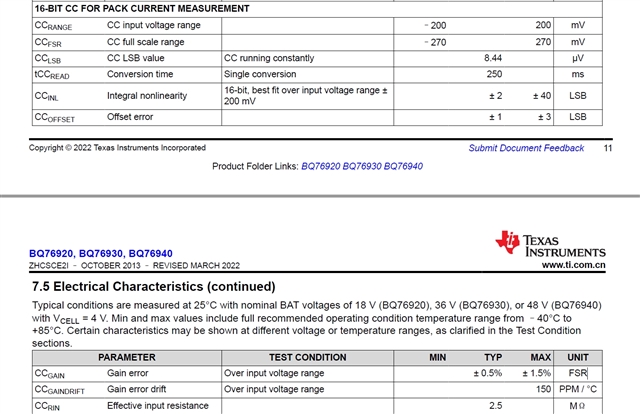如何根据规格书给出的数据表来计算这个电流的采集误差呢?

This thread has been locked.
If you have a related question, please click the "Ask a related question" button in the top right corner. The newly created question will be automatically linked to this question.
您好,
More information can be found in sections 5.4 and 5.5 of the FAQ document: bq76920, bq76930, bq76940 AFE FAQ (Rev. A) (ti.com).
您好,请参考数据手册16-BIT CC FOR PACK CURRENT MEASUREMENT
您好,请参考下面内容
Assuming we ignore non-linearity and offset. The current error would be determined by the gain error.
Datasheet gives a worst-case gain error of 1.5% of the full scale range of the coulomb counter. the full range is -270-mV to 270-mV. So, 1.5% of this range would correspond to ~4-mV of gain error across the whole range. This would be the error at the edges of the voltage range of the coulomb counter, so at ~270-mV.
Let's assume that there is a 2000-mA current flowing through, if we assume the worst gain error is 1.5%, this means that the measurement could be read as 2030-mA. Although this depends on the sense resistor used. The current error due to gain will never be more than 1.5%.
Offset and INL errors are given with respect to LSB's. Which is given as 8.44-uV per LSB.